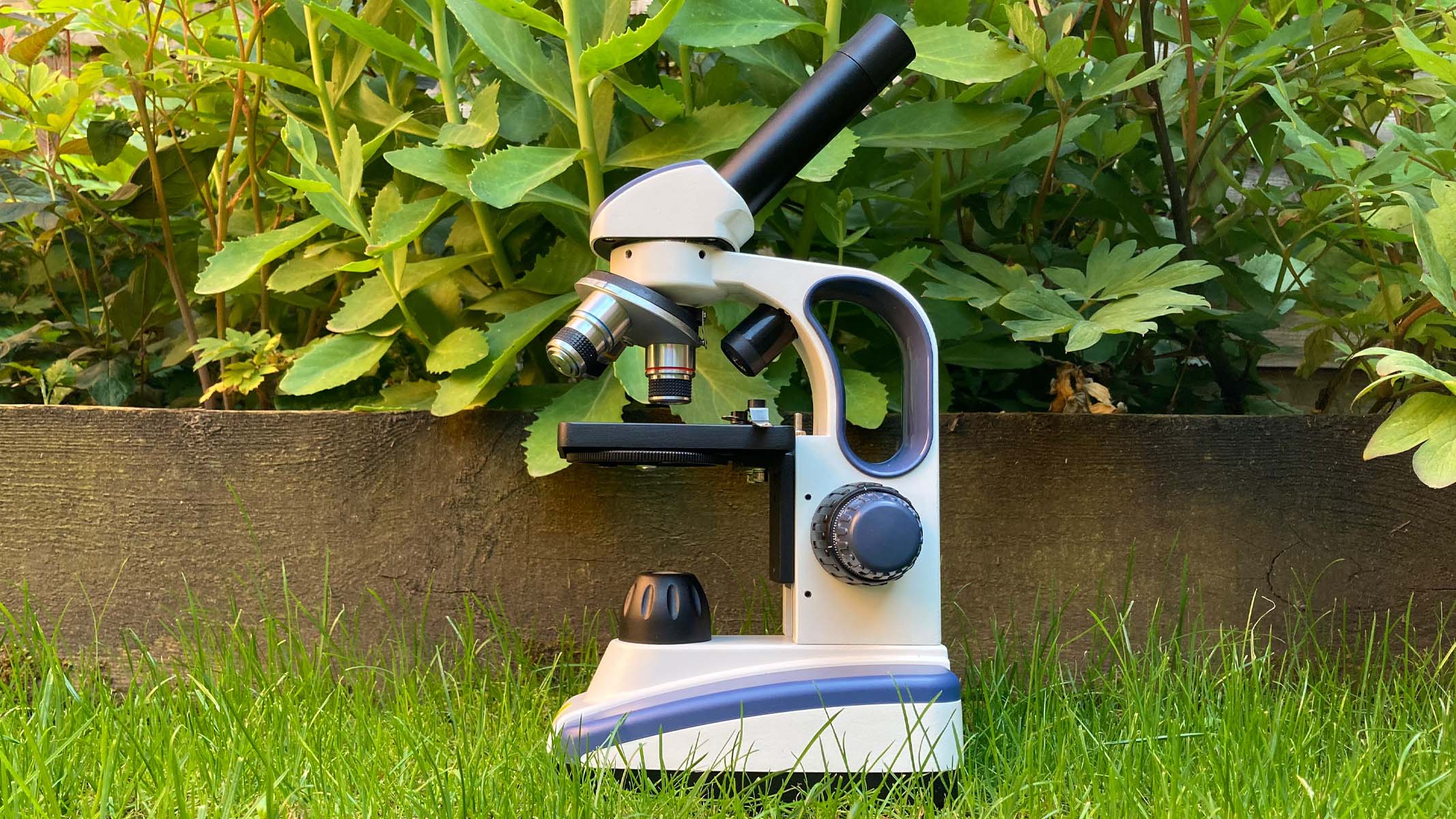
We have had so much fun reviewing the Swift SW200DL Compound Monocular Microscope. We went from the lab, to the garden, then the kitchen, looking for tiny biological and inorganic specimens to examine, and it rose to every challenge. Having a top light enabled us to illuminate thicker, solid substances and whole organisms, and inspect the surfaces of living and inanimate objects. The Swift SW200DL, being light and battery-operated, was easy to transport and use in our chosen locations.
Head: 360-degree rotatable monocular
Eyepieces: Wide-field 10X and 25X
Objectives: 4X, 10X and 40X
Stage: Mechanical 95mm x 95mm
Light source: Dual; dimmable bottom and upper LEDs
Condenser: Single lens with six-hole disc diaphragm
Focusing: Coaxial coarse and fine focusing
Extras: Batteries, dust cover
Add-ons: SWIFT SC1003-CK Optical Swiftcam 10-megapixel camera for microscopes
Pleasingly, the Swift SW200DL was just as impressive during serious school lessons as well; we were able to identify tissues, cells, cell walls and nuclei with reasonable clarity. Thanks to its functionality, versatility and ease of use, the Swift SW200DL is a superb microscope that we would recommend for anyone who wants to explore the world around them, up close and in detail, and have a smile on their face while doing so.
Swift SW200DL: Design
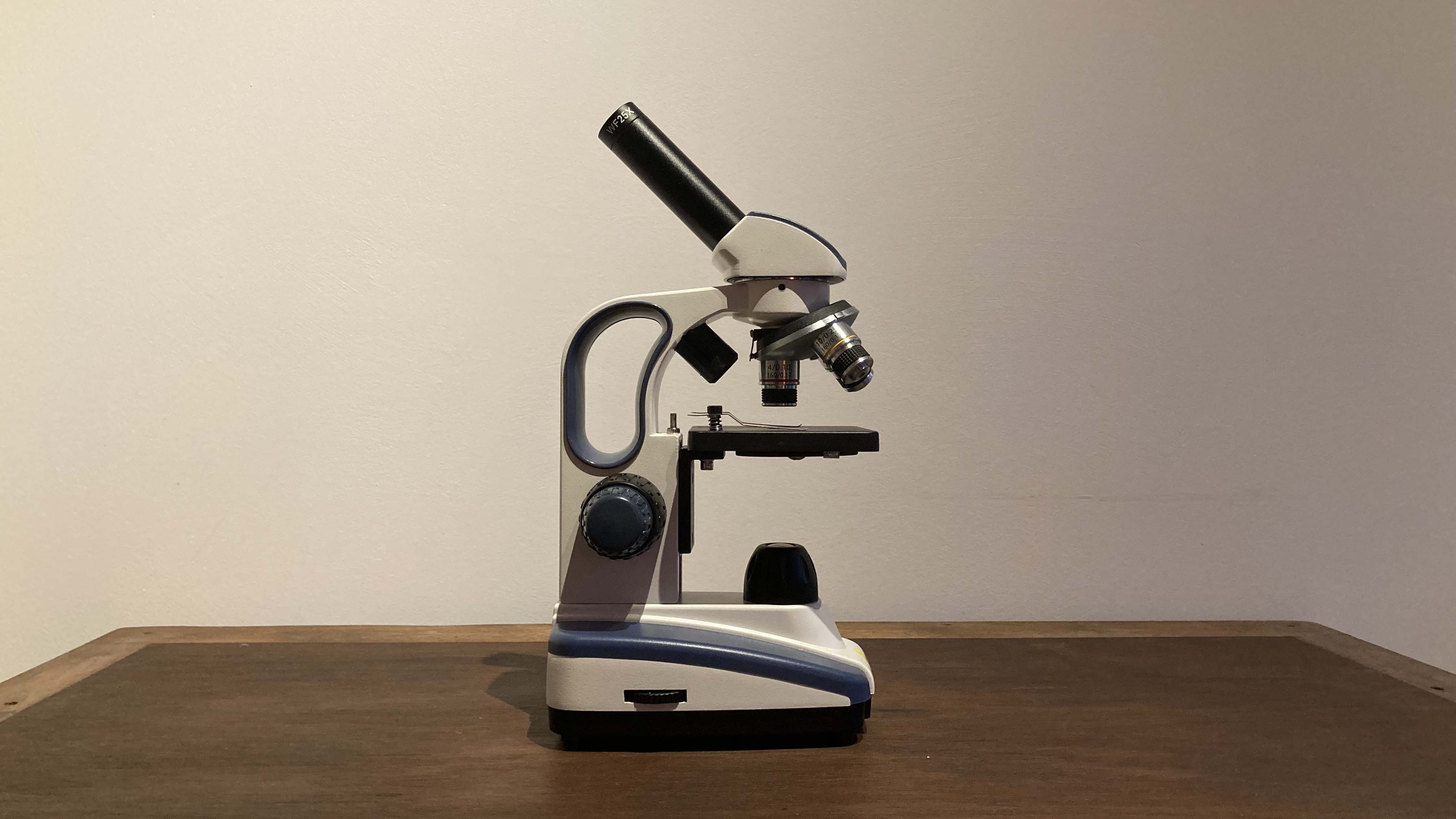
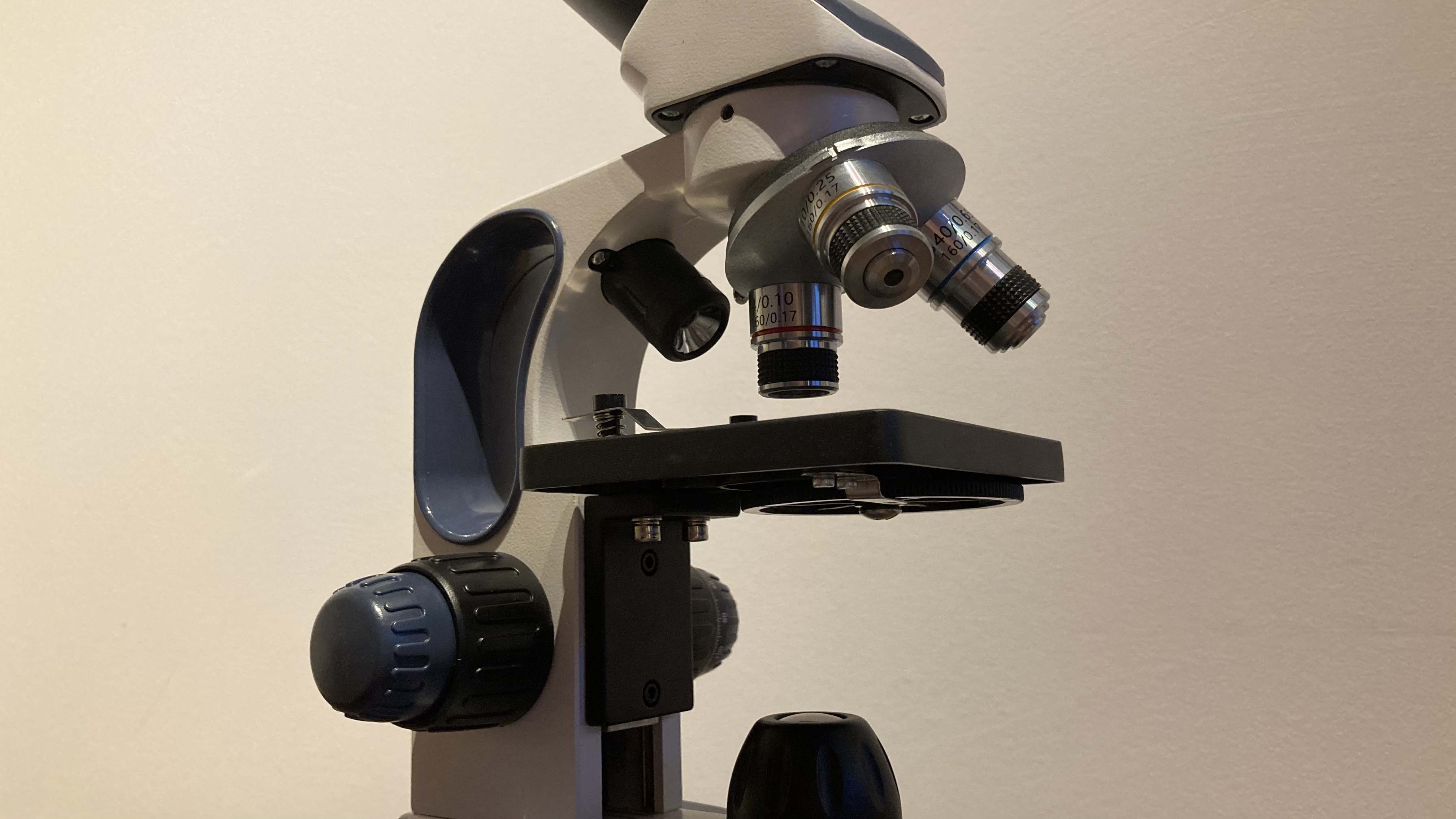
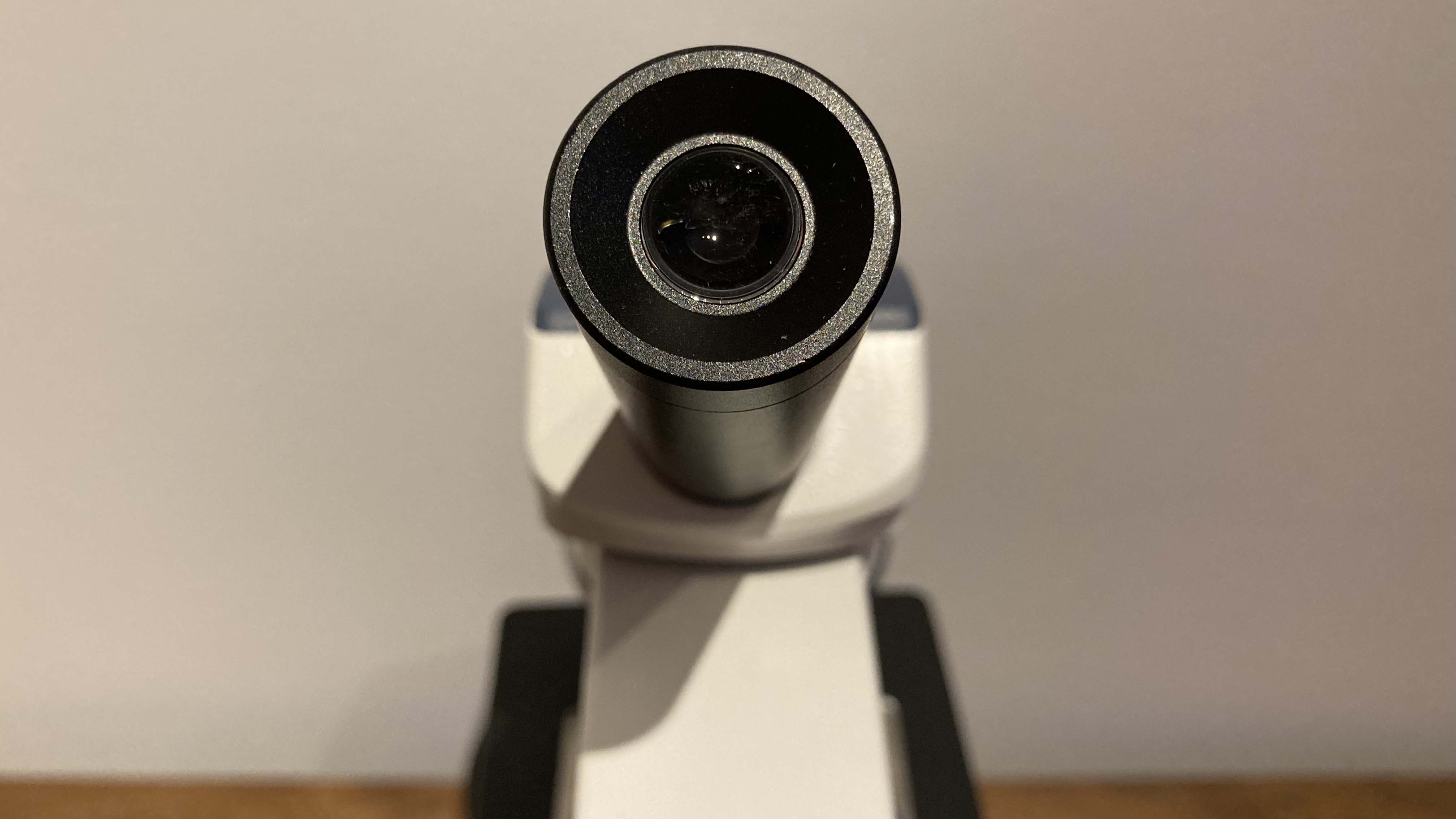
- Excellent value for money
- Dual and adjustable illumination
- Adapts to a variety of uses
For a lower-priced student microscope, the breadth of what the Swift SW200DLCompound Monocular Microscope can do is impressive. It has been designed to be able to carry out multiple tasks to a decent standard so that anyone who owns one — whether they’re a beginner, amateur or hobbyist — will feel like they got a lot for their money.
We were pleased to discover that Swift did not achieve this functionality by skimping on basic quality. The SW200DL has a sturdy metal body, ground glass optics, easy-to-operate mechanical components and lenses that can magnify up to 1000X. This microscope was also comfortable to use and easy to operate. Overall, its design features mean that the Swift SW200DL is a great entry-level microscope for a wide range of applications.
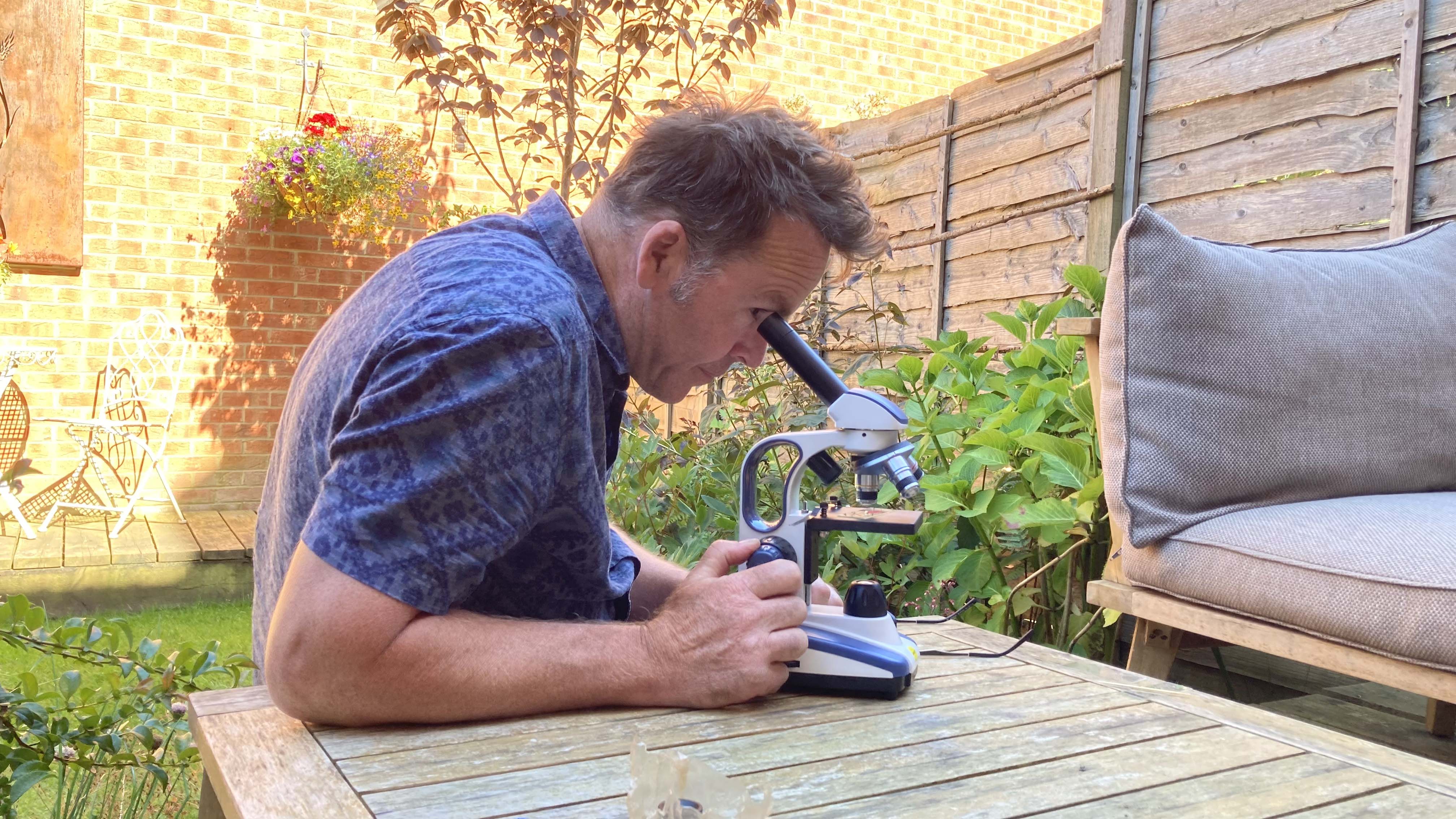
Designed for use in the field as well as in the lab, the Swift SW200DL has a number of features that enable portability. This microscope has a carry handle built into the body that is small enough for a child to carry comfortably, and it is light enough for an adult to carry with one hand. Sadly, though, this handle was not securely fitted, so it wobbled a little.
The SW200DL also came with batteries, so was immediately usable outside, away from an electrical power source. To test this, we took the Swift SW200DL out to the garden, to carry out some moss cushion studies. We were thrilled to find a microscopic worm living and squirming in our field of view, before returning it to its natural habitat. Similarly, we observed multiple live microorganisms living in a puddle.
While exploring our environment, we decide to test the upper light by examining solid specimens; pollen on the anthers of numerous flowers, the surface textures of different seeds and the structure of mud. We felt that the upper light could have been located in a slightly different place, as it couldn’t be used with the 40X objective lens, but because the microscope came with two eyepiece lenses, magnification could be increased to 250X, which was plenty for all the specimens we studied, so this did not affect our investigations.
The light location did mean that there was a noticeable degree of shadowing from the objective lens, which obscured the field of view somewhat. However, the pupils did not notice this and were so engaged with their activities that they only had positive things to say about its design. Fortunately, the upper light intensity is adjustable so the effect was minimized. Furthermore, when returning from our adventures, the microscope was easily wiped clean.
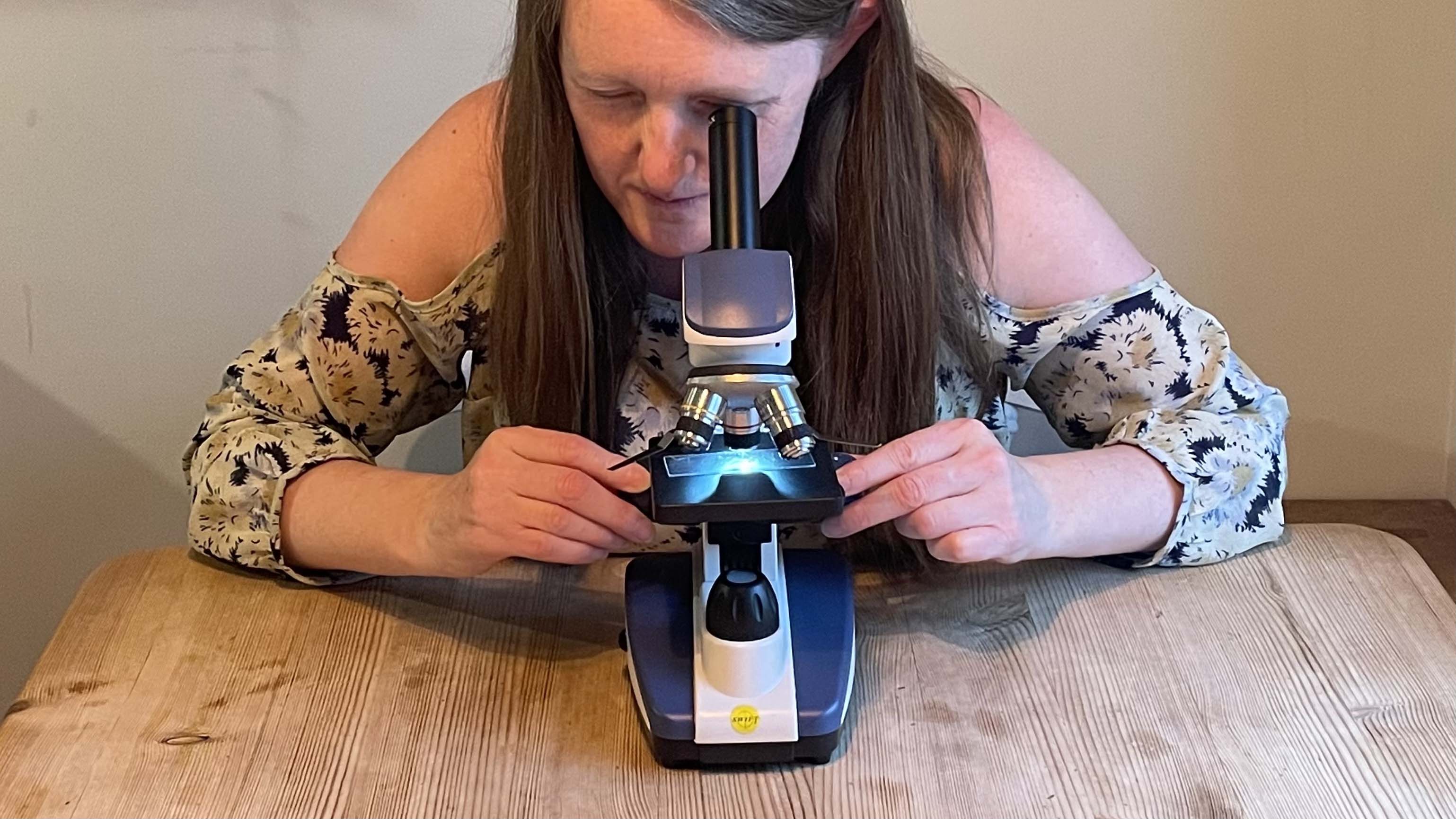
Admittedly more experienced microscope users may miss advanced components such as XY stage movement and binocular eyepieces. Furthermore, there is nowhere on the telescope body to store the second eyepiece once the packaging has been disposed of. Nevertheless, we felt that the SW200DL had been designed to prioritize a breadth of functions and do what it does well while keeping the price low.
With that in mind, we can confidently say in summary that the Swift SW200DL Compound Monocular Microscope would make an excellent first or hobby microscope.
Swift SW200DL: Performance
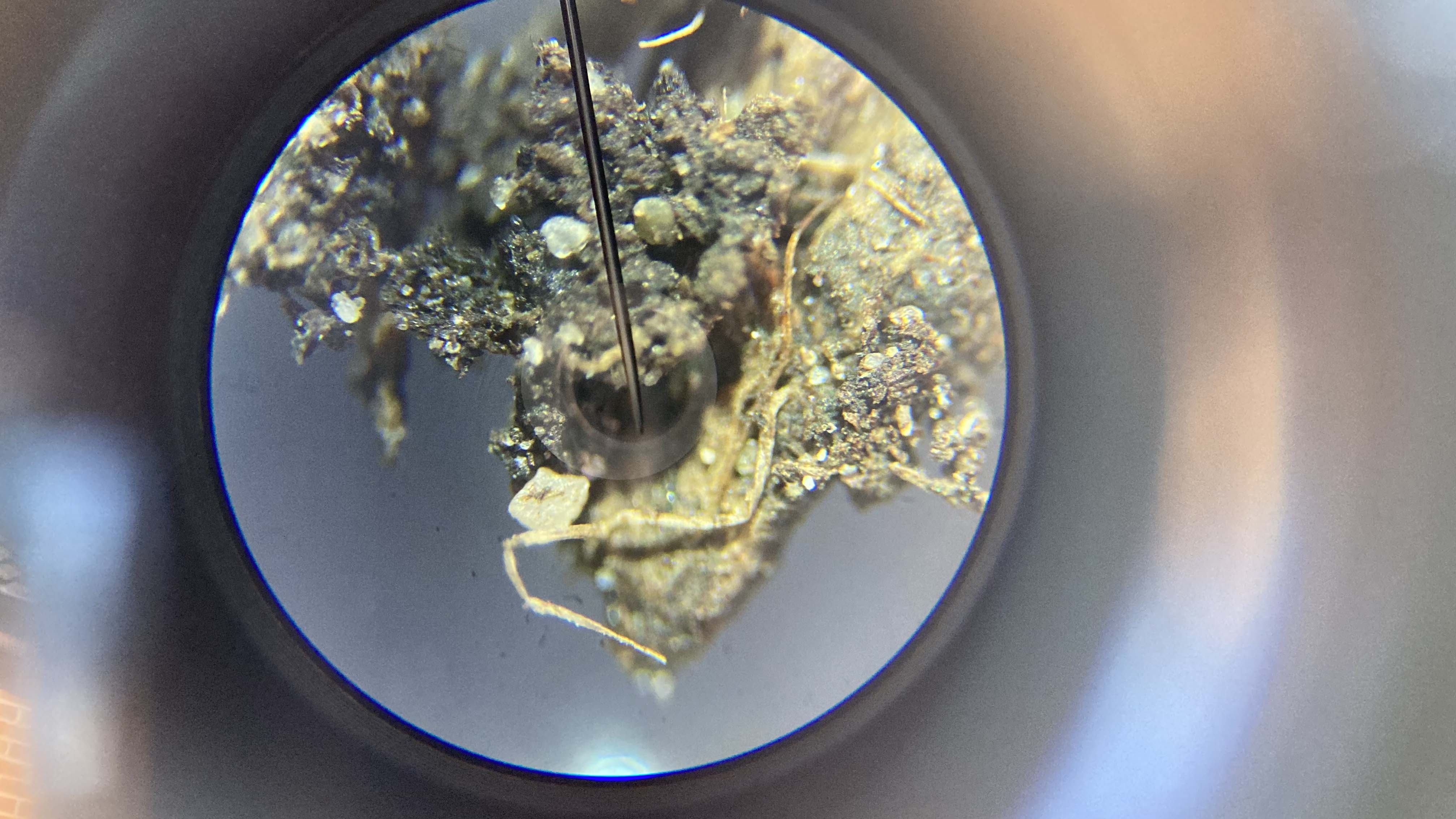
- High magnification
- Versatile
- Brilliant for fieldwork
The Swift SW200DL Compound Monocular Microscope performed well enough to keep our young enthusiasts excited about the subcellular structures they could identify during their lab activities. However, it was out in the field where the thrill of discovery really ramped up a notch. Realizing the versatility of this microscope sparked them to invent their own tasks and they were soon examining anything and everything, independently and competently. What a testament to highlight how usable the SW200DL is!
During a science clinic, pupils benefitted from having two eyepiece lenses. The option of higher magnification of 1000X enabled the comparison of nuclei in different cells; in a blood smear pupils witnessed the lobed nucleus of a white blood cell and the biconcave structure of red blood cells. The eyepiece lenses slotted into the body tube smoothly so students could do this with ease.
Light adjustments and focussing were also performed easily and without help on most occasions. Pupils reported that the Swift SW200DL was simple to operate and they were pleased with how clear their cells appeared. The rotating head meant that pupils could proudly and easily show off their findings.
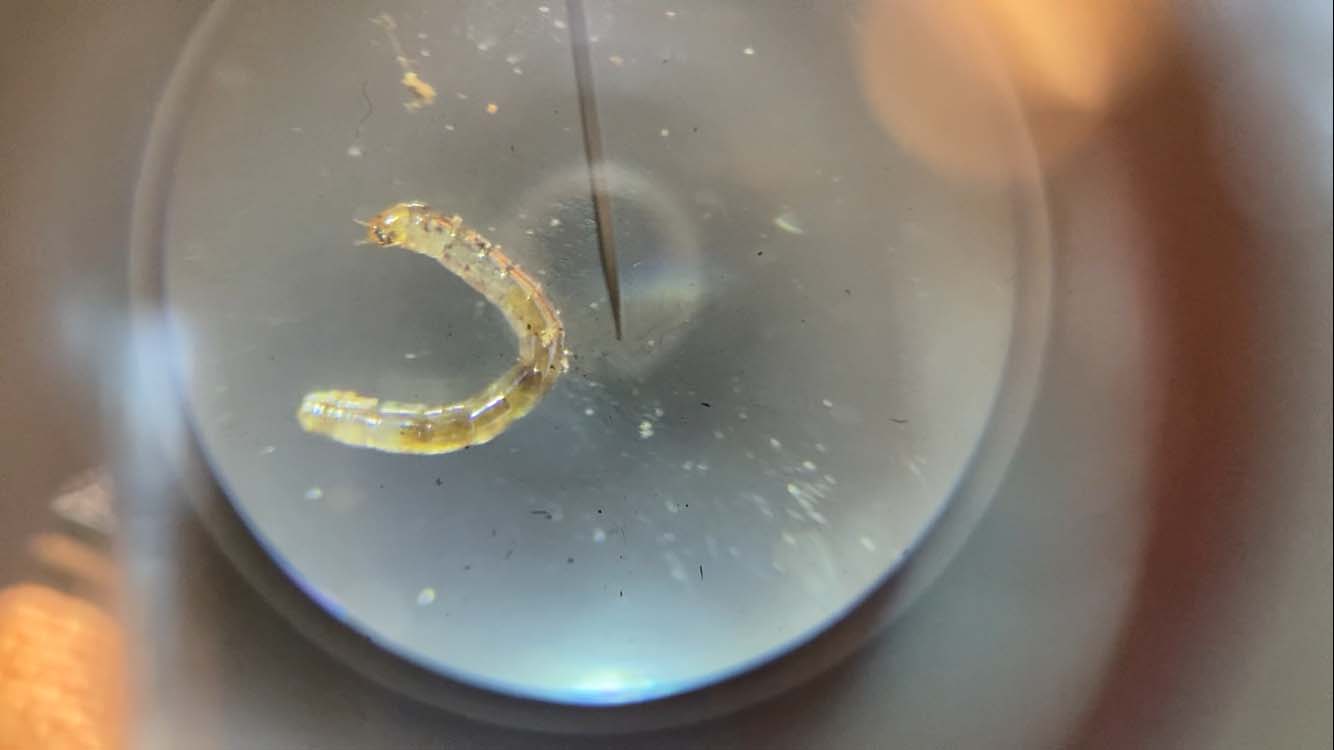

In the field, we greatly enjoyed being able to view live specimens. When searching organic matter for life, a wider field eyepiece lens was useful as the organisms moved out of view quickly at high magnifications. Having a portable microscope was invaluable for this as well, as we could minimize the amount of time that creatures were out of their natural environment and under light. It also gave us the freedom to adapt and respond to new ideas as they presented themselves; perfect for a more dynamic and exciting lesson.
During these spontaneous investigations, pupils could instantly shift between the upper and lower LEDs, adjusting the brightness when necessary. For solid objects like stamen, seeds and coins, the surface textures were viewed in detail using the top light. Another benefit of the top light was that specimens retained their original color, with stunning results.
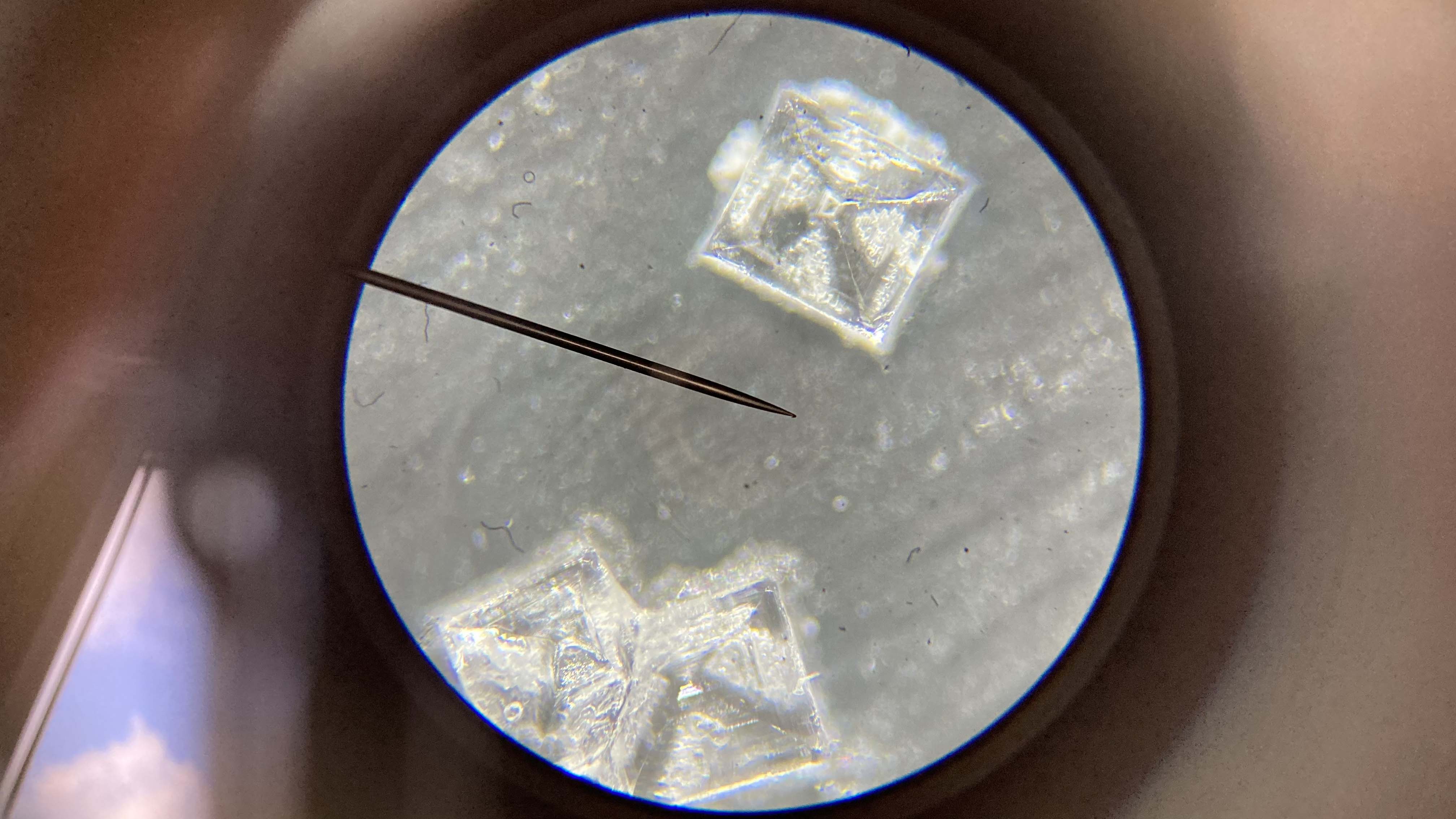
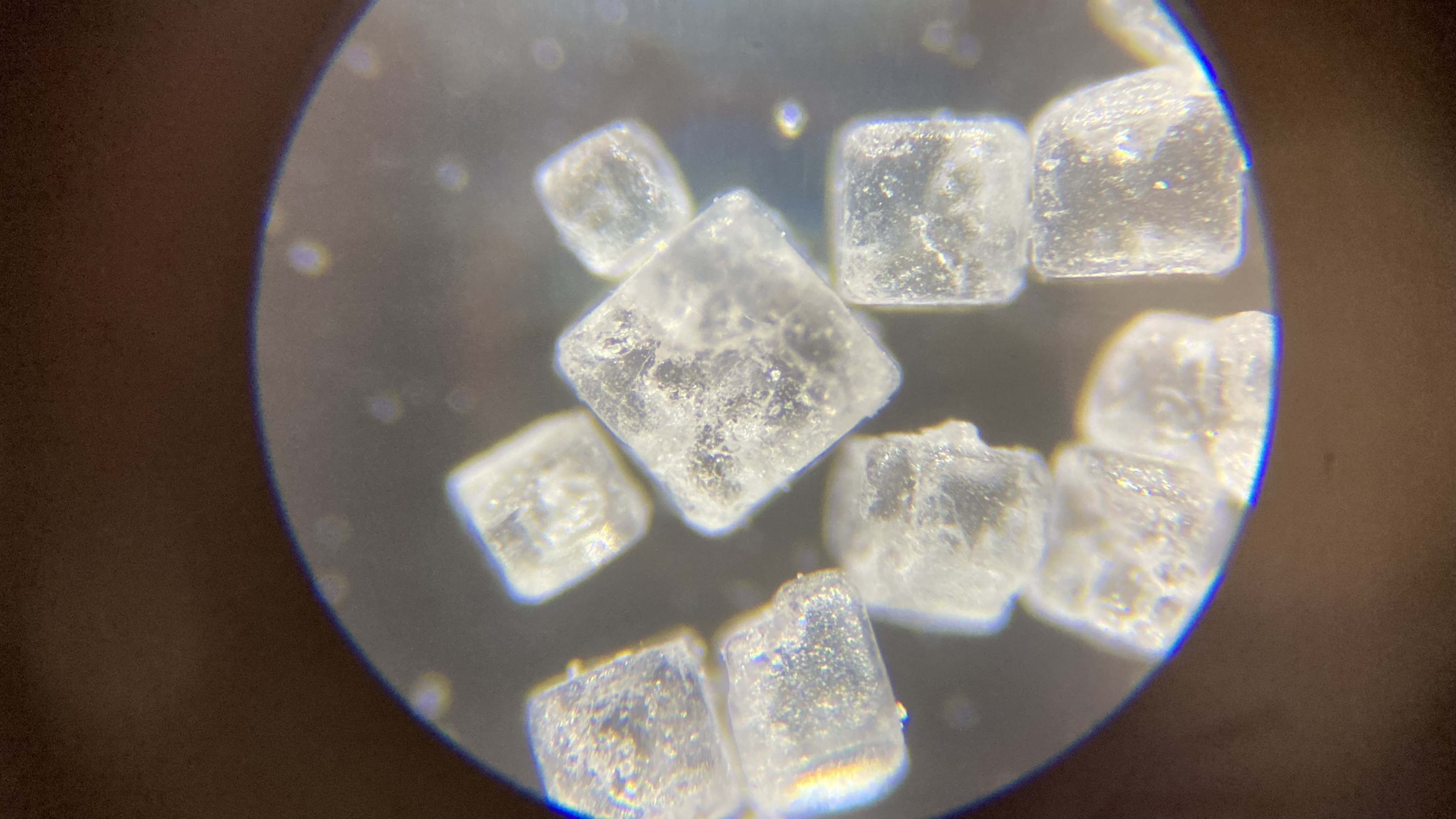
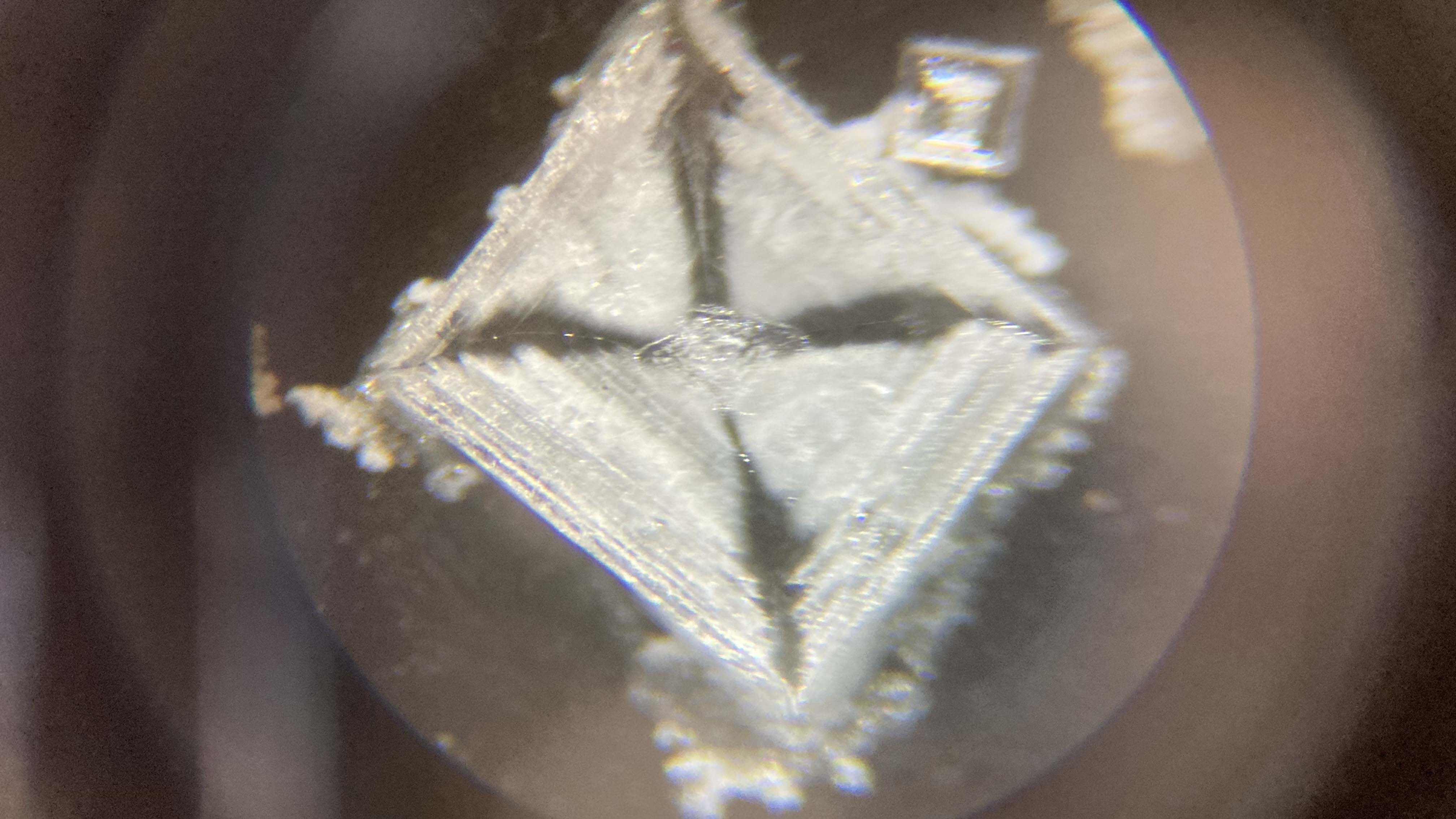
Back indoors, the upper LED was also invaluable in viewing crystal formation. We dissolved some salt and sugar and left them to dehydrate slowly before viewing. Having a varied light source meant that both the cubed organization of atoms in sodium chloride and the hexagonal pillars of sucrose could be seen clearly.
In conclusion, the versatility, easy-to-use components and quality construction meant that both teachers and pupils were very impressed with the performance of the Swift SW200DL.
Swift SW200DL: Functionality
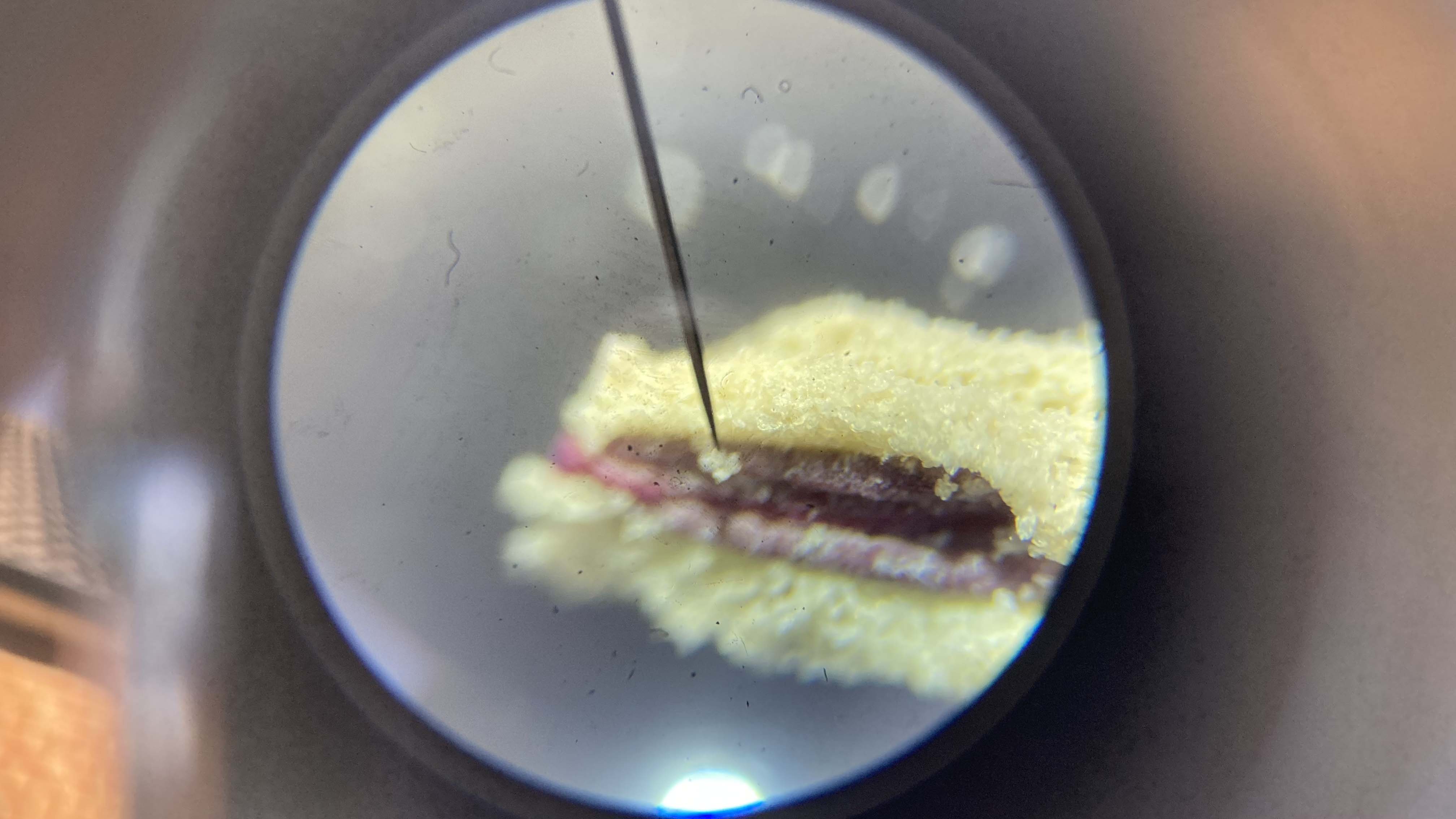
- Battery operated for fieldwork
- Illumination options allow for magnification of solid objects
- Choice of eyepiece lenses
As previously mentioned, it was the range of applications possible with this compound monocular microscope that made the Swift SW200DL such a hit with students and teachers in our science clinic. It had a wealth of well-considered components to allow observations of transparent and solid objects, in the lab or in the field. The SW200DL functioned brilliantly as a versatile, well-made, affordable and robust bit of kit.
To allow for outside biological studies, the Swift SW200DL came with three batteries, so it was fieldwork-ready. The battery compartment was easy to access so changing the batteries would be simple. Some similarly priced portable microscopes have a USB port so power can be gained from a laptop or power bank. Unfortunately, this unit did not have this capability, which is a shame.
Pupils and teachers were in agreement that it was the dual illumination feature that made the Swift SW200DL such a versatile microscope. The range of objects that could be examined grew hugely because of the lower and upper light options. The lower light was necessary to view subcellular structures and adaptations, as required when learning about specialist animal and plant cells. The upper light, on the other hand, was invaluable in scrutinizing the textures of different materials.
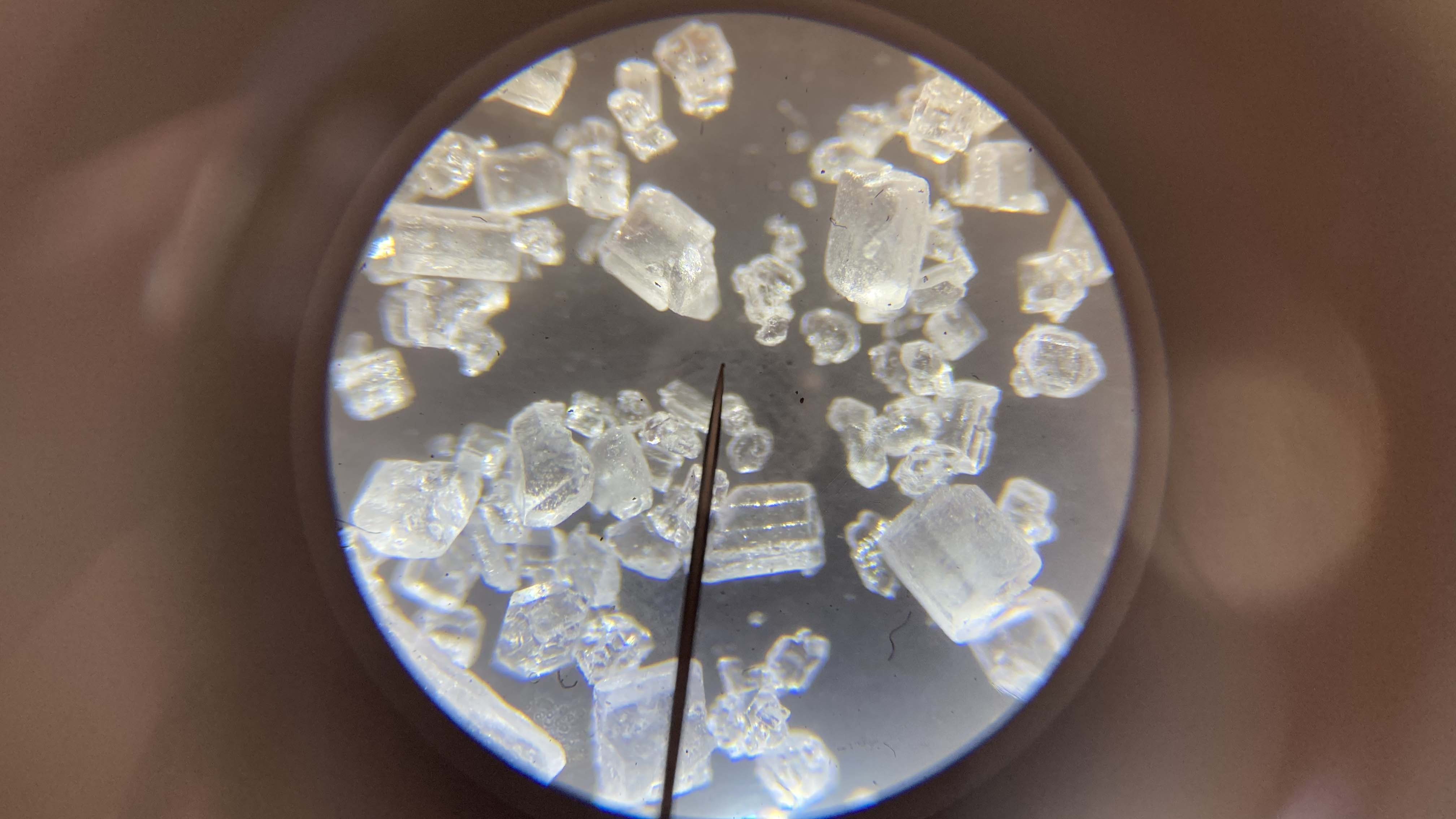
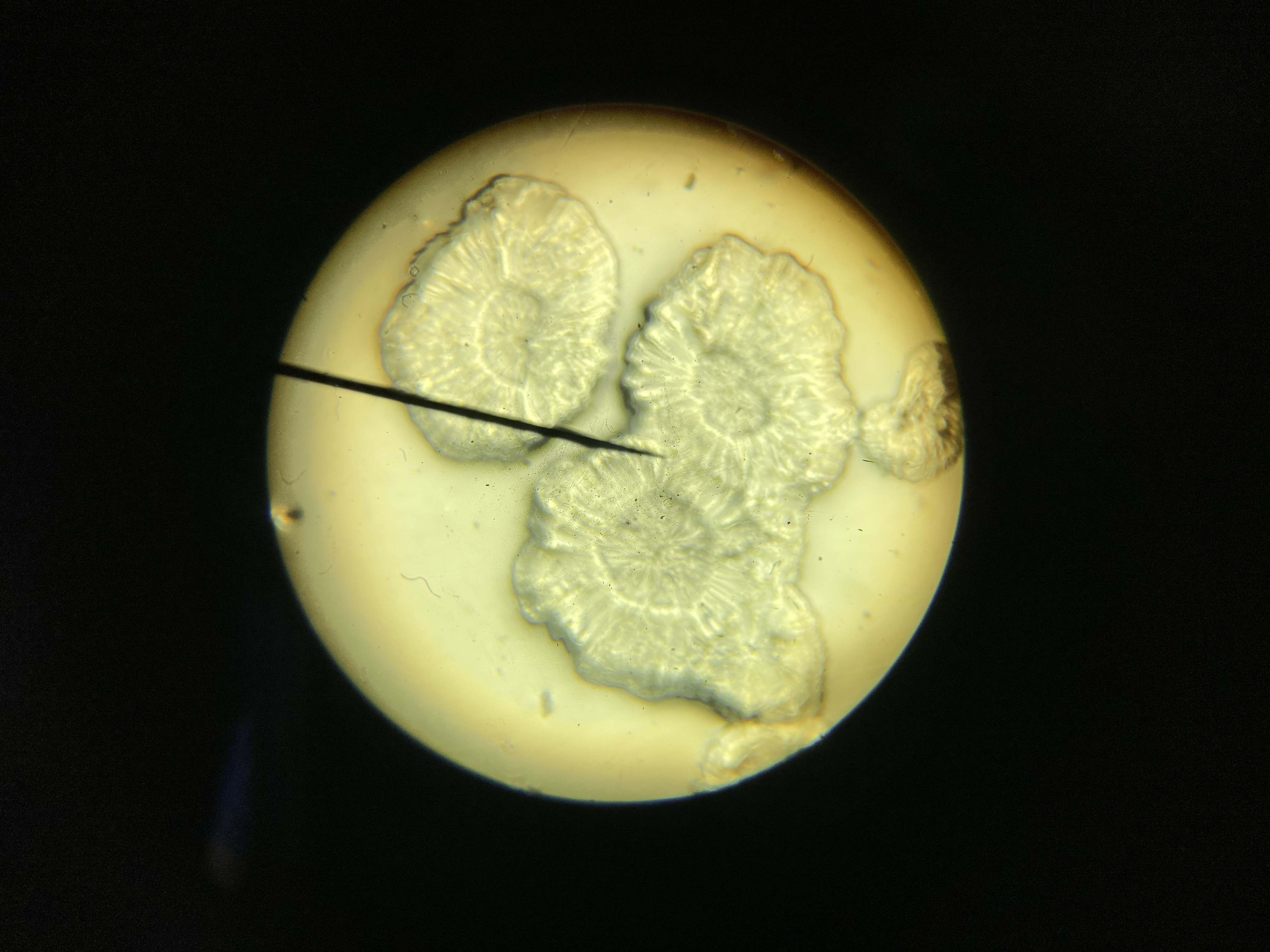
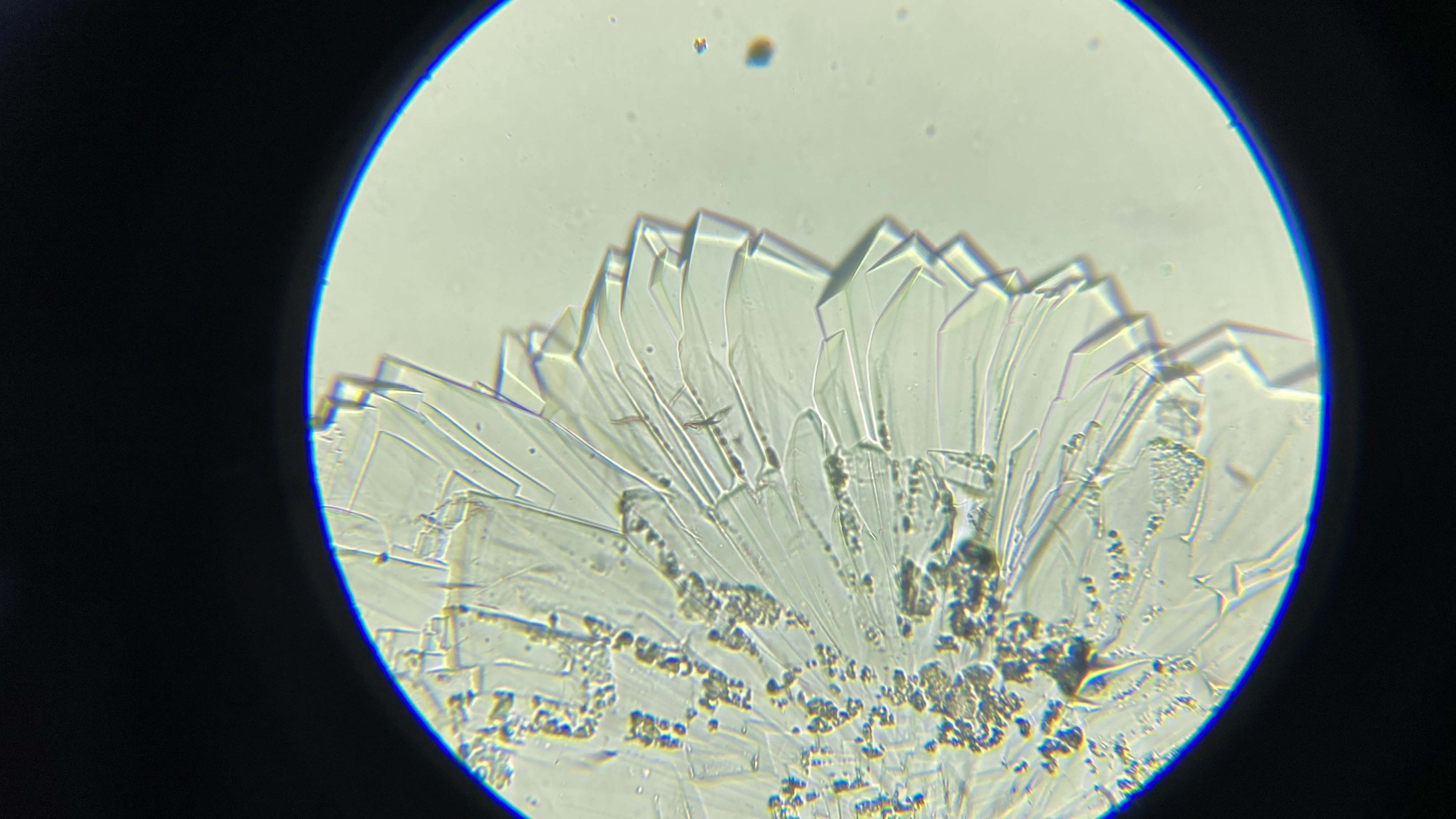
We could adjust the light level of both LEDs and switch between them quickly and easily. Occasionally, it was beneficial for specimens to be viewed with both of them. Sugar crystals’ structure, for instance, was enhanced by being able to view them illuminated both from below and above, alternately.
One limitation of the top LED is that the objective lenses block some of the light from reaching the specimen, rendering the 40X objective lens defunct. This was rarely an issue because the majority of our field studies only required a low magnification. Luckily, because of the second eyepiece, we could increase magnification to 250X without needing the third objective.
Another slightly irritating feature was that the pointer in the 10X eyepiece lens was overly long, and often felt like it was in the way. A solution is to switch to the 25X eyepiece lens, which doesn’t have a pointer. Alternatively, the eyepiece lens unscrews for cleaning, and the pointer can easily be removed. Beware though, it was very fiddly to put back in!
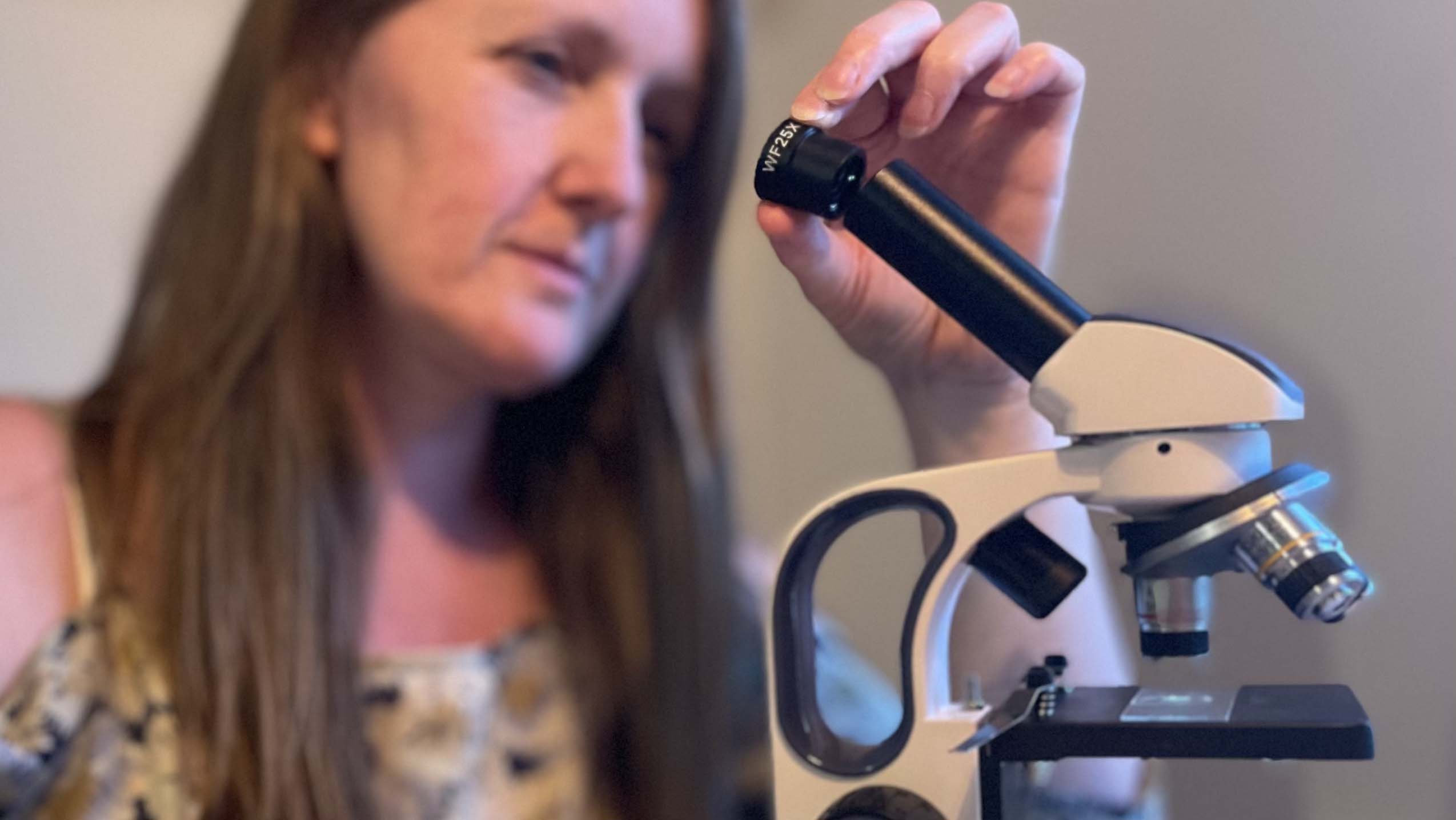
In summary, despite the lack of high-end features, the functionality of the Swift SW200DL is fantastic when you consider how inexpensive it is. The option of battery power allows it to function well in the field, the choice of LED illumination — source and brightness — enables the user to view transparent or solid objects, and having a choice of eyepiece lenses enables the higher magnifications necessary for cell microscopy.
Thus, we recommend the versatile Swift SW200DL Compound Monocular Microscope as an excellent choice for beginners, or for hobbyists looking for something to have a little fun with.
Should you buy the Swift SW200DL?
✅ You want to use a microscope for field studies: The Swift SW200DL is portable because it is easy to carry, light, and can be operated with batteries.
✅ If you want to observe solid objects: The Swift SW200DL’s upper, adjustable LED makes viewing thick solid specimens and surface textures possible.
❌ You want magnification higher than 1000X: Choose a model with four objective lenses.
❌ You are going to use it for long periods of time: For prolonged, professional use, choose a binocular microscope.
Absolutely yes, buy it now! We recommend this as an inexpensive, multi-functional microscope; the Swift SW200DL has a breadth of features that will keep an enthusiastic hobbyist busy for a good while. It is simple enough and sturdy enough for a complete beginner, yet also possesses enough quality components to give good enough resolution for more experienced users.
It may not have the swanky, higher-end features that you would get from a more expensive microscope, but the ones it does have are well-made, so the SW200DL will give good value for money.
For its functionality, versatility and ease of use, the Swift SW200DL is a superb little microscope that we would recommend for anyone who wants to explore the world around them, up close and in detail. If you decide to opt for the Swift SW200DL, we are pretty confident that you will not be disappointed.
If the product is not for you
For a more professional, clinical microscope, Swift makes a trinocular version with higher magnification and XY mechanical stage — the Swift SW380T.
For complete beginners to try at a cheaper price, but still with the dual light function, try the more basic, kids-specific AMSCOPE-KIDS 40X-1000X.
How we tested the Swift SW200DL
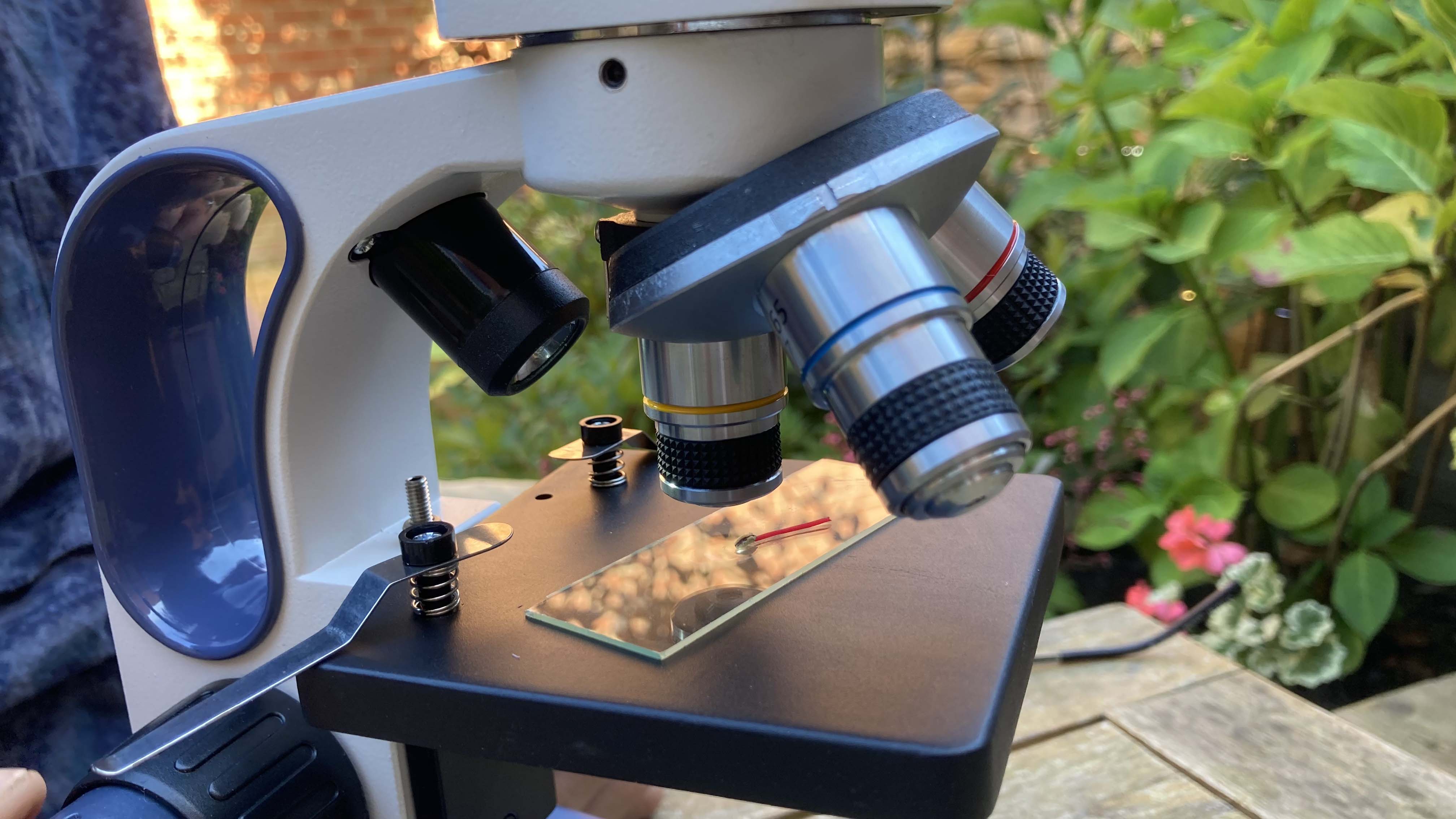
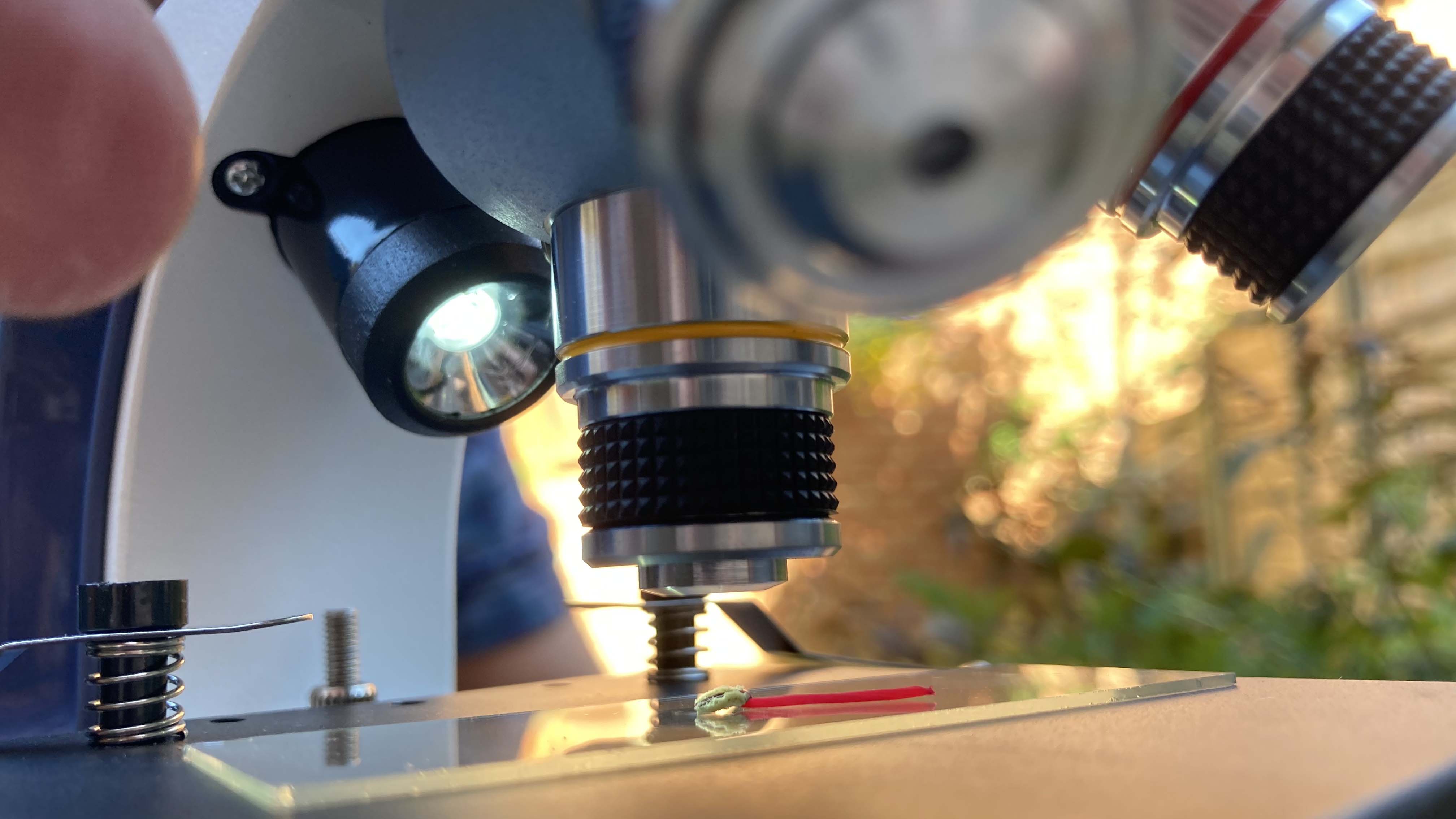
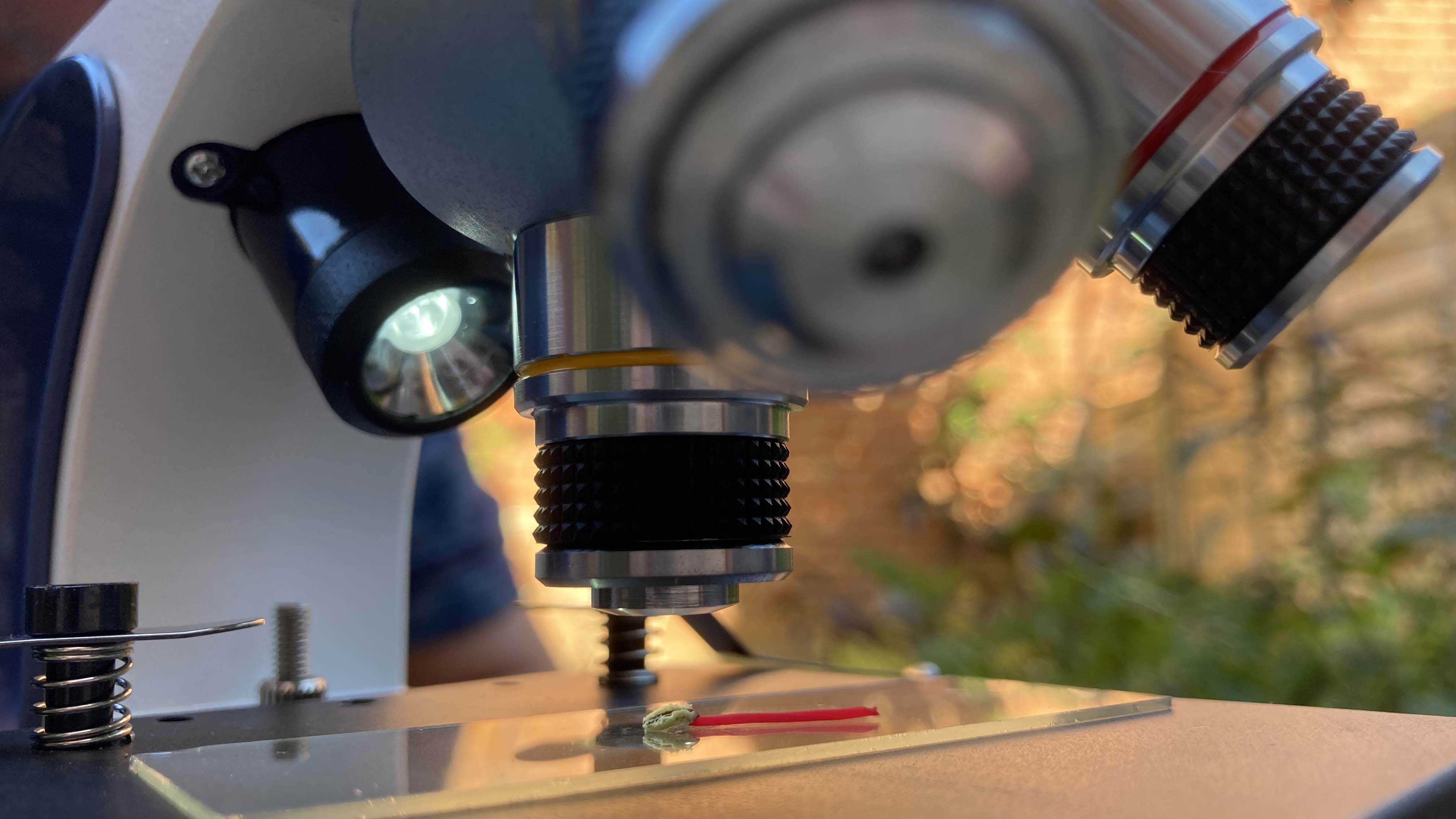
In our school laboratory, the Swift SW200DL was put to the test academically. Pupils prepared and viewed biological slides to help with their studies: leaf peels, cheek and onion cells, and root hairs. Students navigated their way around the microscope without assistance. They competently focused their images at all magnifications and commented how easy it was to set up and use.
Down at the pond, pupils mounted water droplets and viewed a variety of different microorganisms using the wide field lens. As the Swift SW200DL had the benefit of the upper LED, pupils switched the illumination source and enthusiastically began examining mud samples, moss cushions, pollen on stamen and various seeds. They soon went off piste and grabbed coins, wood, paper and a plethora of materials to investigate their surface textures.
Later, in the kitchen, we dissolved and dehydrated sugar and salt in order to examine the crystal formations. We all agreed that the top light was exciting to use and added a further dimension to the Swift SW200DL’s already extensive capabilities.







